The Hastings International Chess Congress hasn’t skipped a year since the second world war, so I was delighted to learn that the tradition would be honoured by a strong online event which took place earlier this month, featuring a dozen top British players. For the second year running, the event was sponsored by Caplin Systems, makers of financial trading technology. (The Caplin British Online Championships were held last month and won by Michael Adams. Matthew Wadsworth and Matthew Turner secured qualifying spots for Hastings.)
Reading that this year’s event would be a centenary caused me some puzzlement, because I was certain that the Hastings centenary took place in 1995 — I was there. My event, the Hastings Challengers, was played on Hastings pier. In fact, the 1895 event (won by Pillsbury, ahead of Chigorin, Lasker, Tarrasch and Steinitz) was held in summer, and was essentially a one-off, unlike the long series of post-Christmas events which began with the 1920/21 edition, won by England’s Frederick Yates.
A century later, it was David Howell who left us all in the dust, taking first place with an emphatic 9/11 score. Playing Black against David in the ninth round, I invited a scrap with my opening 1 e4 e5 2 Nf3 Nc6 3 Bb5 g6 4 d4 exd4 5 Bg5 f6!? 6 Bh4 h5 7 h3 Qe7 8 O-O Qc5!?. Whatever method there was to this madness, it was soundly refuted by David. Still, my quirky final round win against Gawain Jones (shown below) boosted me into second place, with 7.5/11.
Gawain Jones — Luke McShane
Caplin Hastings Online, January 2021
1 e4 c5 2 Nc3 Nc6 3 Bb5 Nd4 4 Nf3 e6 5 O-O Ne7 6 Nxd4 cxd4 7 Ne2 a6 8 Ba4 b5 9 Bb3 Nc6 10 d3 Bc5 11 Nf4 g6 12 Nh3 Qe7 13 Bh6 Bb7 14 c3 f6 15 Nf4 Rg8 Considering the rest of the game, this move might look like a shrewd provocation, but it was actually rather naive. Unsure what to do, I hoped that my idea of g6-g5 and Rg8-g6 (to trap the bishop) might shoo his pieces away. As soon as I played it, I remembered Gawain’s aggressive instincts, and saw what was about to hit me. 16 Nd5 Forwards, not backwards! I grimaced and sank into thought, but slowly realised that I had some unexpected resources. exd5 17 exd5 Ne5 18 d6 18 f4 was a better option. Still, after Nf7 19 Re1 Nxh6 20 Rxe7+ Kxe7 21 d6+ Kf8 22 Bxg8 Kxg8 we reach a strange position, where I would favour the three pieces over the queen. Qxd6 19 Bxg8 dxc3! (see diagram) The tables are turned! Now if 20 bxc3 Qc6! causes huge embarrassment. Mate on g2 is unstoppable, since f2-f3 places the White king in check. Much less effective was 19…Qc6 20 f3 dxc3+ 21 d4! 20 Kh1 cxb2 21 Rb1 Bd4! The bishops dominate the centre of the board, and the b2-pawn remains a real nuisance. It’s a bizarre position, but once my king found a home (on b6!) it was smooth sailing. 22 f4 Nc6 23 Re1+ Kd8 24 Bb3 Kc7 25 Qc2 Kb6 26 Bg7 Rc8 27 Qe2 Qxf4 28 Rf1 Qe5 29 Qf3 Nb4 30 Qxf6+ Qxf6 31 Bxf6 Bxf6 32 Rxf6+ Ka5 33 Rff1 Nxd3 34 a3 Rc1 35 Kg1 Be4 36 Bg8 g5 37 Bb3 d5 38 h3 h5 39 Rd1 Nc5 40 Rbxc1 bxc1=Q 41 Rxc1 Nxb3 42 Rc6 d4 43 Re6 d3 44 Kf2 d2 White resigns
Over-the-board play is as rare as ever, but one notable exception is the traditional elite event in the windswept Dutch seaside town of Wijk aan Zee. It is under way until 31 January, with Carlsen and Caruana as the top seeds. To follow the games, visit tatasteelchess.com
Got something to add? Join the discussion and comment below.
Get 10 issues for just $10
Subscribe to The Spectator Australia today for the next 10 magazine issues, plus full online access, for just $10.
You might disagree with half of it, but you’ll enjoy reading all of it. Try your first month for free, then just $2 a week for the remainder of your first year.

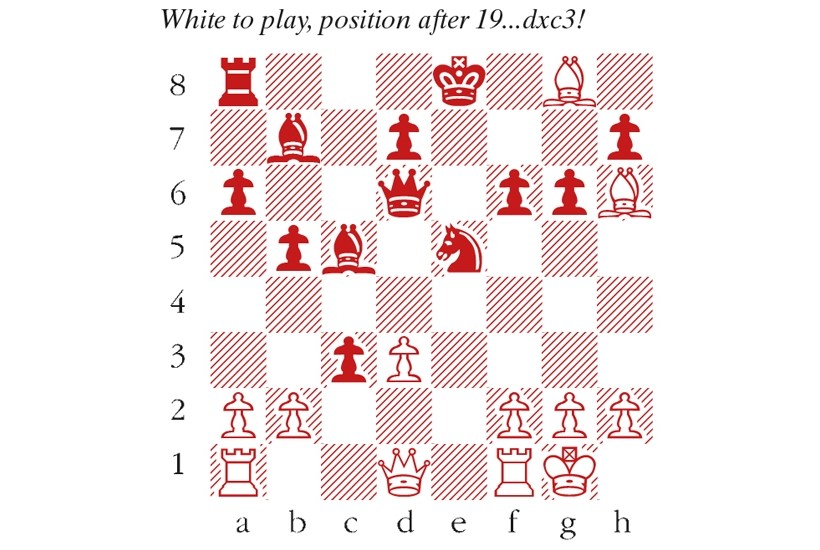
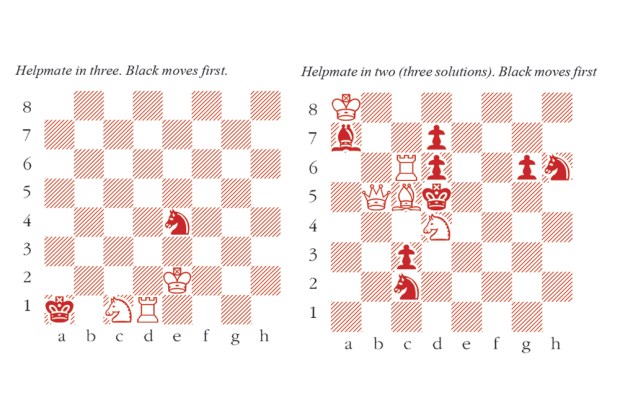
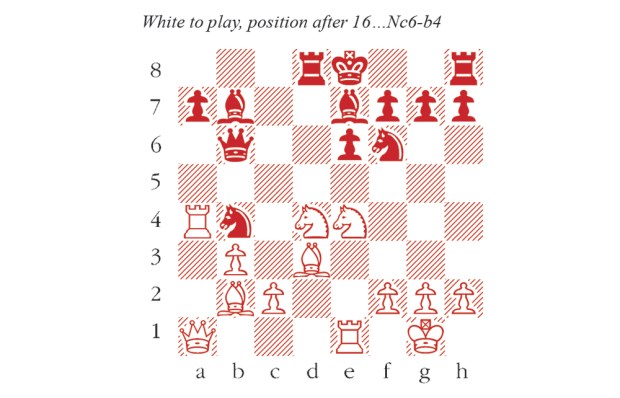
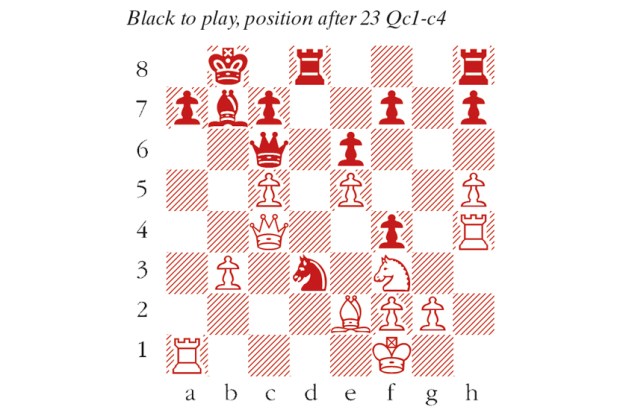
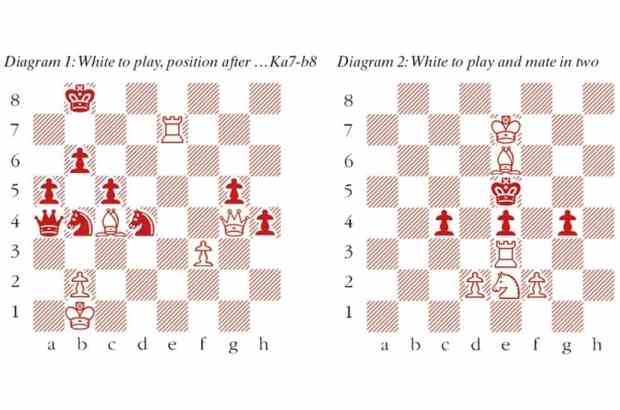
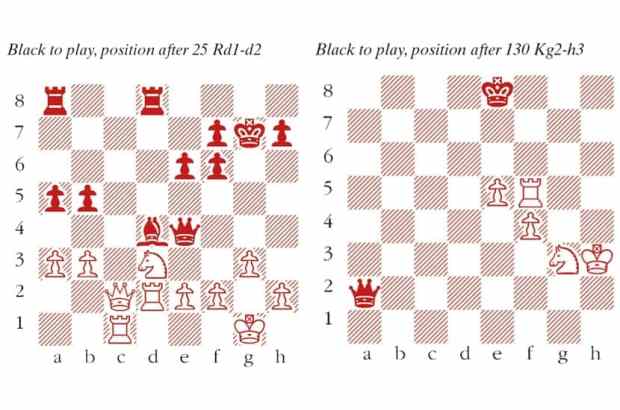
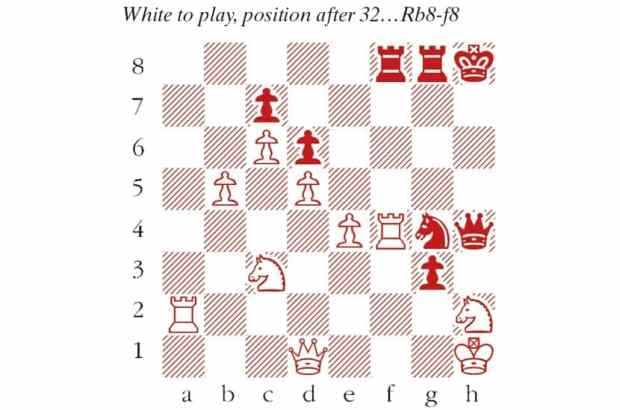






Comments
Don't miss out
Join the conversation with other Spectator Australia readers. Subscribe to leave a comment.
SUBSCRIBEAlready a subscriber? Log in